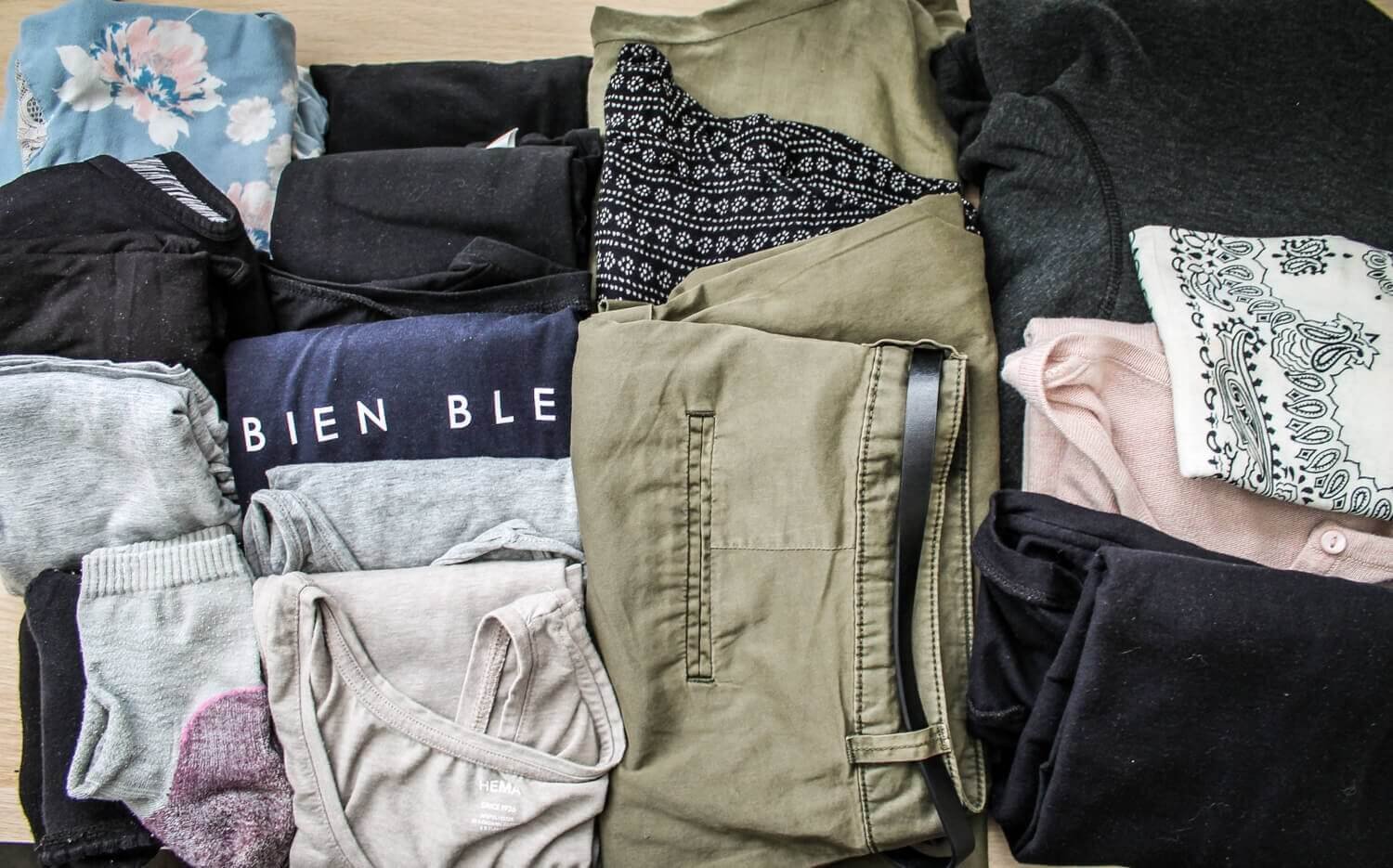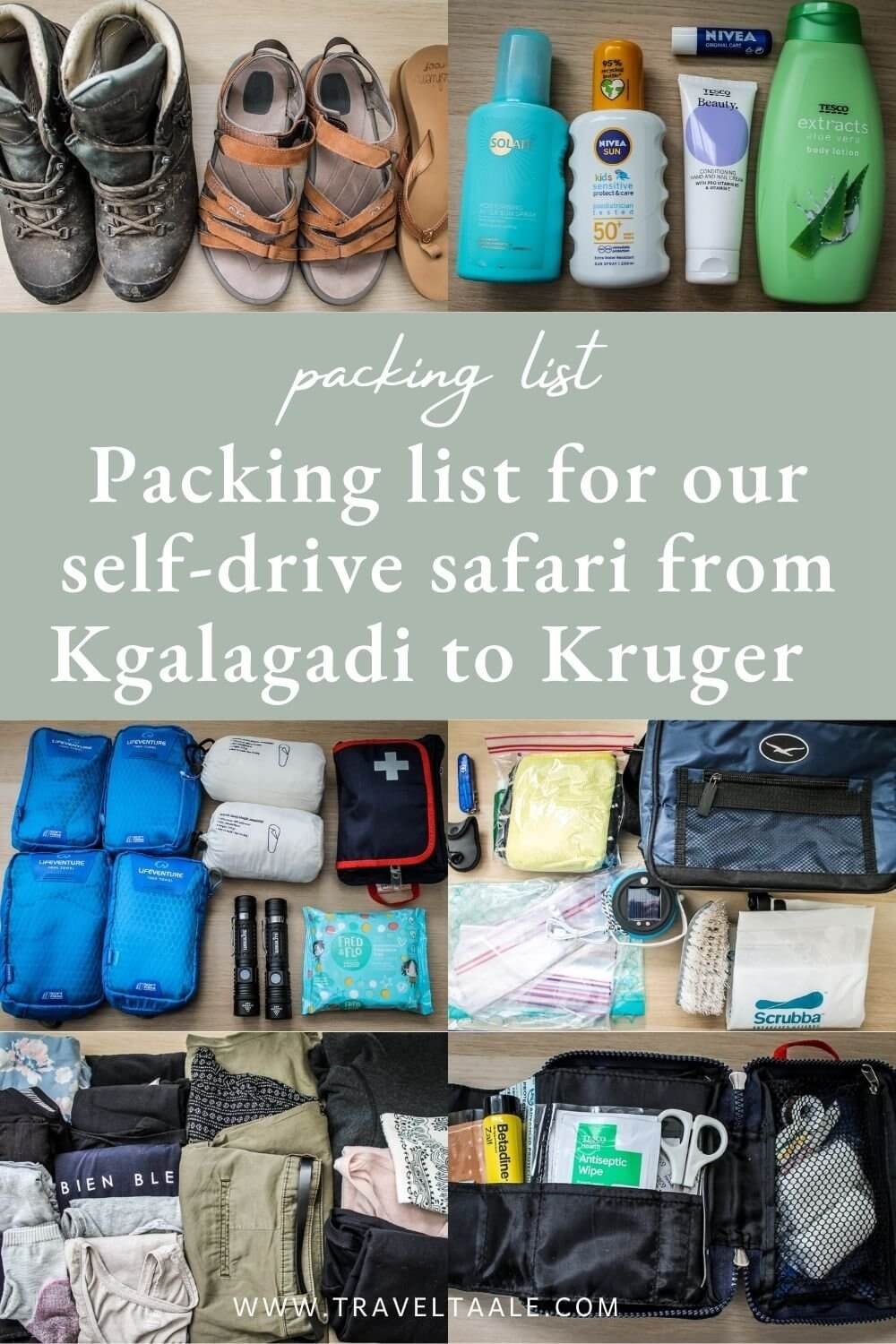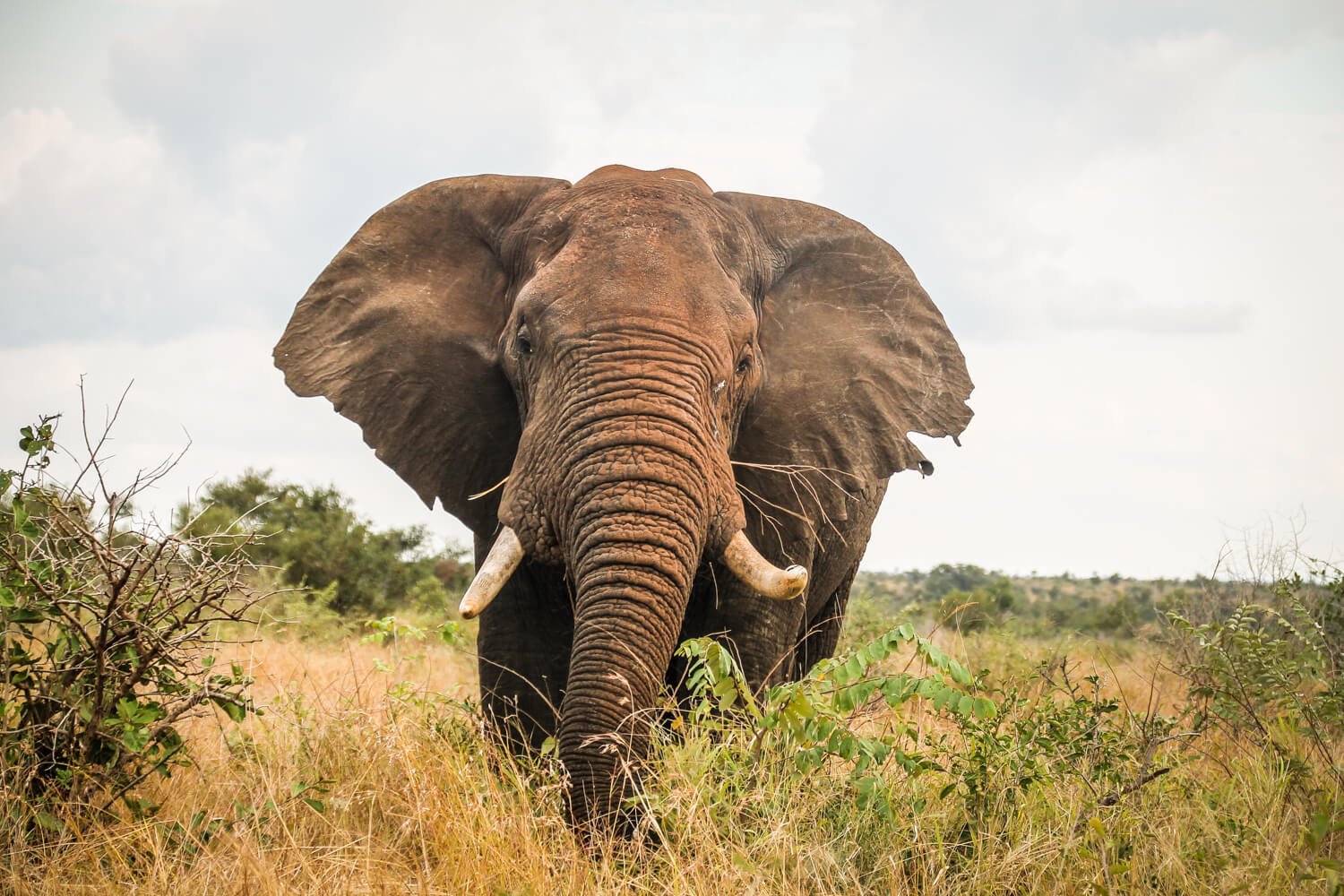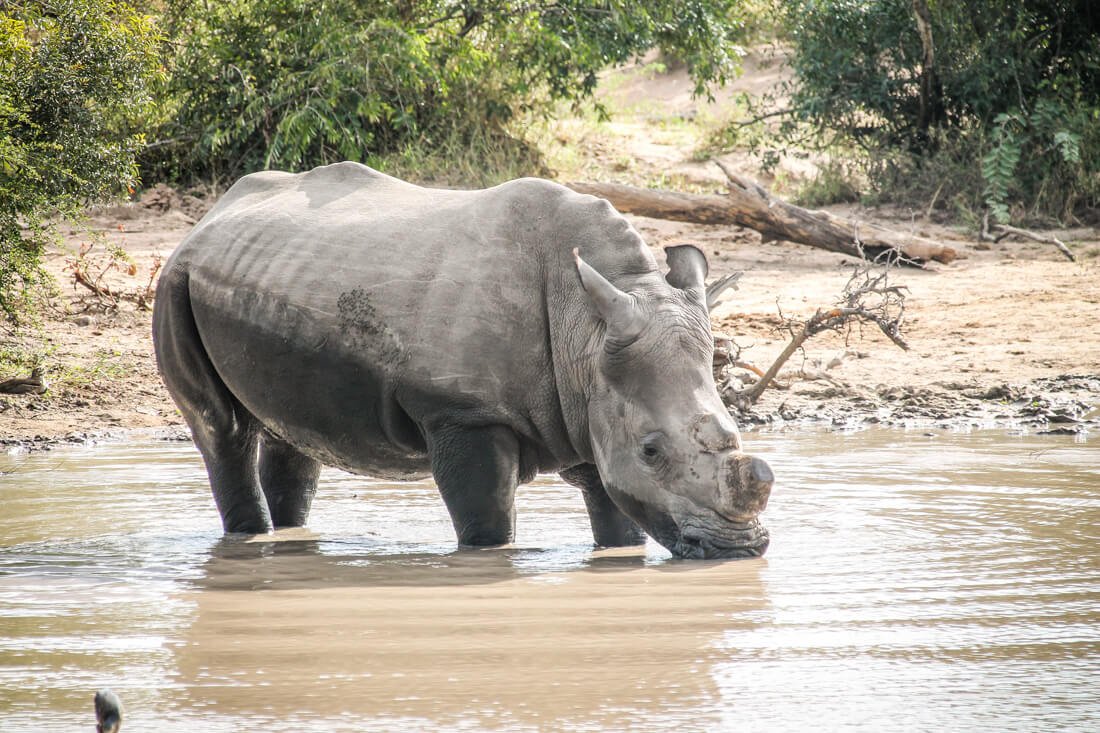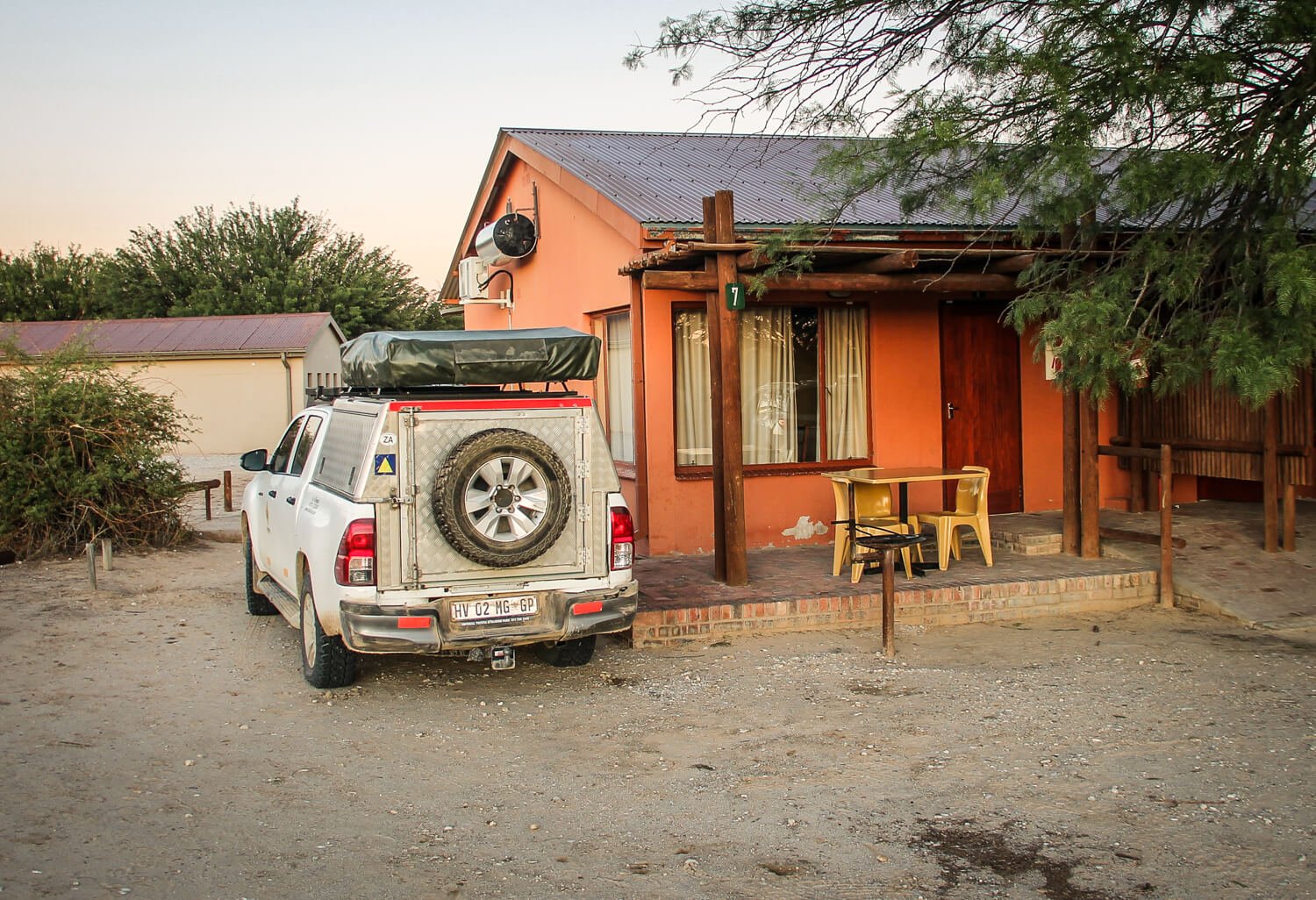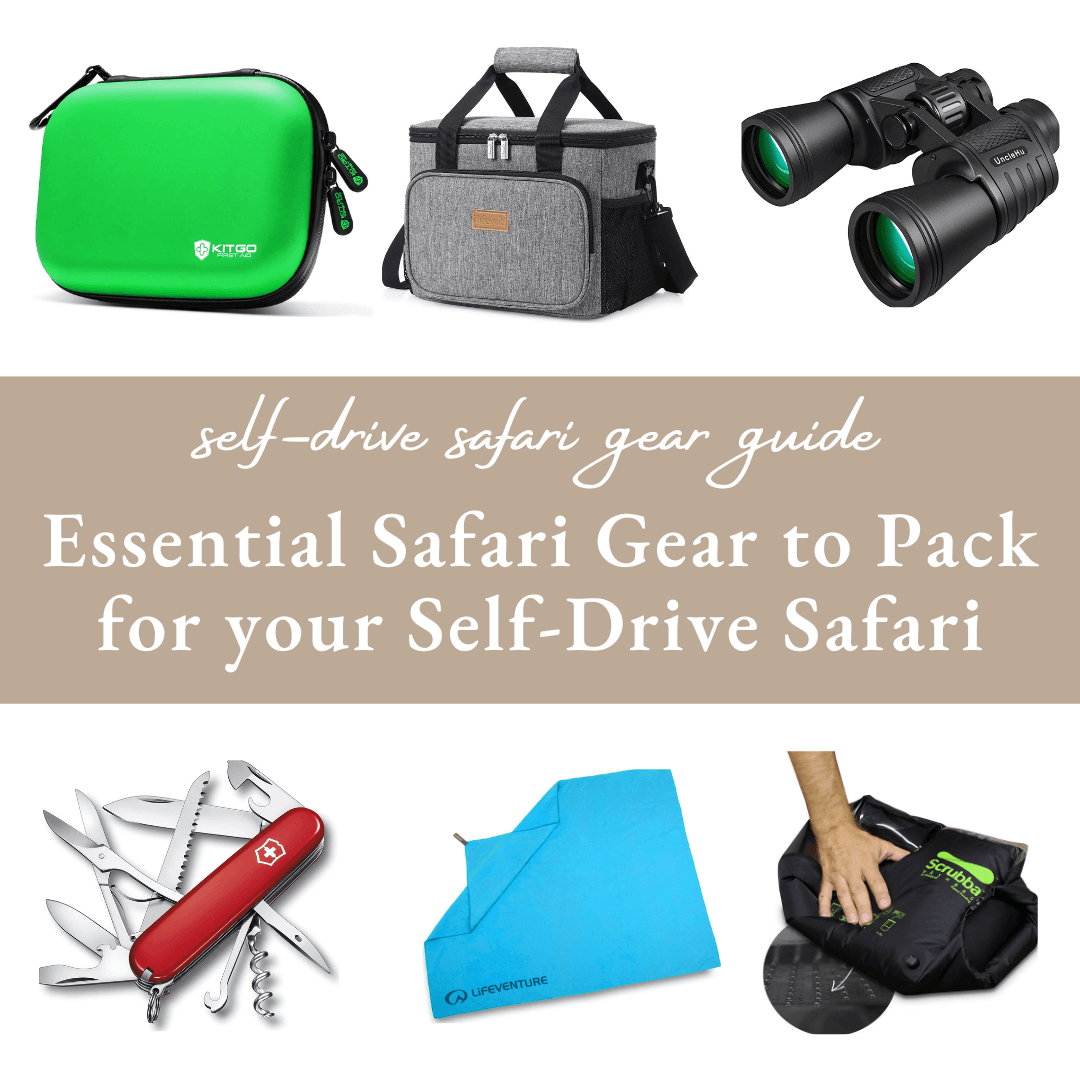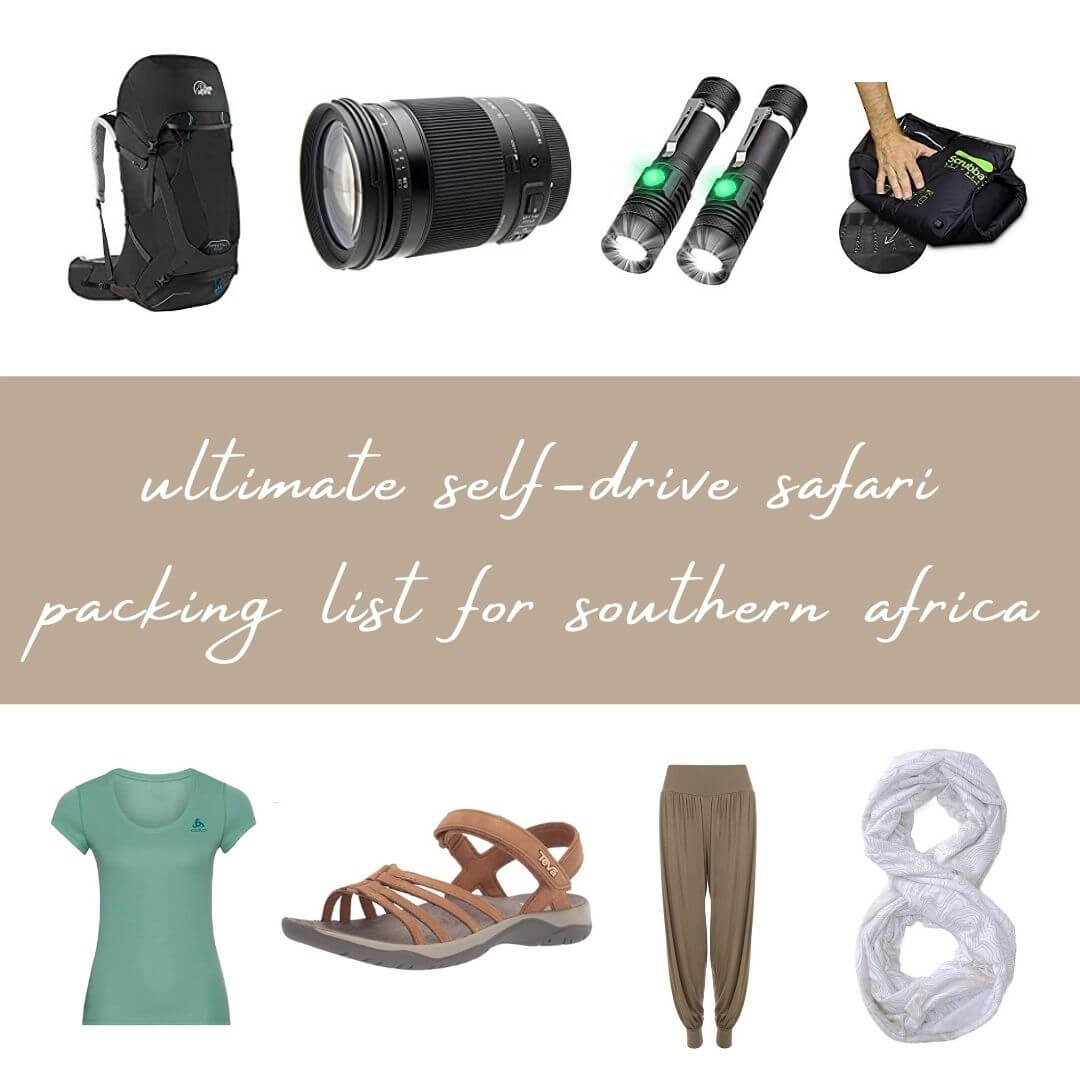Packing list 16-day self-drive safari Kgalagadi to Kruger
Just to let you know… This post (probably) contains affiliate links, including Amazon Associates links, and we may receive a small commission if you click one. This is at no extra cost to you and allows us to keep our blog running.
Over the years it has become a sport to reduce the weight off our backpacks compared to the previous time. And I think we have established quite a thorough packing list for our self-drive camping safaris without breaking your back or the bank. In November 2019 we were able to bring the weight down to one backpack with 12kg and one backpack with 15 kg.
As you don’t have to expect to find a lot of facilities to wash your clothes while on safari we used to bring this biodegradable laundry wash to wash in a basin but while it would fresh up our clothes, it wasn’t enough to get stains out. But since our last trip, we bought this Scrubba laundry bag which will make washing much easier (and we combine this bag with this clothesline which is ideal because you don’t need pegs and can easily be hooked onto trees).
So even though we’re going in a different season where the temperatures are already dropping slightly during the day and nights can go to 16-18C and March still being part of the rainy season, our aim for this trip was to stay below 10kg for each backpack.
Find out below what we packed and if reached the target of 10kg.
The backpack for our self-drive safari from Kgalagadi to Kruger
When you’re on a self-drive safari there generally is not a lot of space in the back of your car as this is also where you have your fridge, groceries, table, chairs and all your other camping equipment. So bringing a suitcase is not the best idea. While you don’t tend to walk around a lot with your bag on safari, we always travel with our backpacks. It’s large enough to fit everything in, even the things we need to bring when camping, it makes walking around a busy airport much easier and quicker (the one time I took a suitcase on a trip it gave me blisters from constantly picking it up and pulling it around) and it’s easier to not pack too much.
Backpack
We have 65+15L Low Alpine backpacks. The main compartment is 65L but the top is extendable so you can increase the volume by 15 litres. Even though we always try to keep the weight down, the backpacks are often filled to the top due to the equipment we bring.
And while 80 litres is a lot and I often struggle with back pains, I’ve always found it easy to carry this backpack as the straps are really supportive. And when you don’t fill it completely, you can use the straps on the side to make the bag smaller.
What I also love is that it has 2 compartments separated by a zipper, so you can make it one large compartment. But when you close the zipper the large compartment is accessible from the opening at the top. And the smaller compartment at the bottom has a separate zipper on the outside to access just that compartment. This is where we always keep the clothes we need most often (like socks and underwear, t-shirts) separated by packing cubes.
We bought our backpacks in 2008 for our first trip to South Africa, so the exact same ones do not exist anymore but this 65L backpack from Low Alpine comes quite close. And we never travel without these luggage organisers. Just stack them in your backpack and you never have to search through your whole bag again.
Flight bag
We love to travel with our backpacks but there is a downside to it because your stuff is not as protected as with the locks on your suitcase. So you need a flight bag to protect it and make sure nothing can be taken from your pack.
In the past, we had a flight bag that had a cord at the top to close it but after these were damaged in an attempt to get our car out while we were stuck in soft sand in Kgalagadi Transfrontier Park (which was quite a genius idea from Sam) we got these from backpack locker.
You can easily get your pack in and zip it up. Then you can use a lock to close the zips. It has shoulder and side handles to pick it up. And it hardly takes any space when you’re not using it.
And while the backpacks are in the back of the car, we often put our backpacks in these flight bags because everything gets dusty when travelling over gravel roads.
What we’re packing in the top compartment in the backpack for our self-drive safari from Kgalagadi to Kruger
Instead of per type of product, we’ll order this post based on what we’re packing in which compartment in our backpacks.
In the top compartment, we add those things we definitely need on the first day of camping. So these will be the:
Quick-dry towels: It’s not the best experience but we’re all for packing light so we bring these lightweight and quick-drying towels. These towels fold up very small, absorb water well and dry quickly. Just pin them between car doors & let the sun dry them while you’re packing up the tent.
Travel sheets: This is a personal preference but we use travel sheets to line the rented sleeping bags with. It can also act as a sheet to lie under when it’s too warm for a sleeping bag. towels
Torch: You always want to have a torch with you for walking in the camps at night so you don’t accidentally step on a snake or scorpion. These Wowlite torches are great because they are USB rechargeable (so no need for spare batteries and they are only 300g).
First aid kit: But we’ll come back to this below
Baby wipes: Everything, and then we really mean everything will be covered in dust and sand so it’s great to have these at hand.
What we’re packing in the main compartment in the backpack for our self-drive safari from Kgalagadi to Kruger
In the main compartment, we start with the things we don’t need immediately but that also serve as some protection, like a large beach towel for at the swimming pool and our light windbreaker. (We don’t use our jackets often but you don’t want to leave home without a light jacket in case it rains, especially on this trip there is a real possibility we need to set up our tent in the rain). After that our camping equipment follows;
Small 15L cooler bag like this one. As you can only get out of your car in a designated picnic area you can’t get food or drinks from your fridge so that’s where the cooler bag comes in. In the morning we will pack it up for the day ahead.
Zip-lock bags: We bring them to preserve our food in the fridge.
Dishwashing: We always bring kitchen towels, a scrub sponge and dishwashing liquid
A brush: This one might seem odd but if you’ve driven on gravel roads you know how dusty everything gets. A brush like this is great to clean your car, bags and shoes.
Pocket knife: We always take a small Swiss army knife with us. Mostly used to open a bottle of wine or beer but can be used for other things as well ;)
Lantern: In terms of lights, we also bring a solar-powered camping lantern similar to this one. This solar-powered lantern comes in great on the dark nights by your tent for when you’re cooking or for on the table when trying to plan your route for the next day. It folds up easily so they don’t take up a lot of space and you can just pop them on the dash of your car to charge while you’re driving around.
The Scrubba laundry bag we mentioned earlier will make washing much easier. We’ll use this in combination with this biodegradable laundry wash and this clothesline that doesn’t need pegs and can easily be hooked onto things.
The seasoning for cooking. If we bring them ourselves, we use the small jars from this bottle set to bring salt and pepper.
What you need to bring in terms of camping equipment depends on the gear that is included with your car rental and where you’re going. The equipment that is included is quite extensive when you’re renting a 4WD with rooftop tent but be sure to check what is included as not every car rental company is including the same things.
And something that we have learned over time is; National Park shops are not created equal. While the shops in Kruger National Park are well stocked, the same can not be said from the shops in Kgalagadi due to the location. So for this trip, we will be stocking up in Upington before we drive to Kgalagadi and as we will stay over in Upington before driving to Kruger we will again buy groceries there. Because of this and because we’ll be there for just over 2 weeks instead of a couple of days, we will be buying some things (like coffee, toilet paper) instead of bringing them.
Toiletries & first aid kit
It might sound a bit silly, but for a trip like this, the first aid kit and toiletries take up a lot of the weight. When we weighed the back when we had filled the top compartment with the first aid kit, the camping equipment and the toiletries we were at 6.5 and 7kg.
Why? Well, in general, you can be quite far away from a doctor or a hospital in Southern Africa. And with us going to Kgalagadi, the entrance gate at Twee Rivieren is already 2.5 hours from Upington, so when you’re in Mata-Mata you can add another 3 hours and even more when you travel north of Nossob. So we like to be prepared and have a fully stocked first aid kit. And you need to consider the environment you’re in; the Kgalagadi is dry and it will dry out your skin, hands and eyes and there are quite a few insects.
So next to personal toiletries, which we bring in this mini bottle set to save some space, we pack insect repellent and insect bite relief pens to treat the bites. As well as antibacterial hand gel and biodegradable wet/baby wipes (we have a small one at the top compartment and a larger one in the main compartments - this has only been an addition to our packing list since Namibia but it is great to clean dirty hands before eating, cleaning the table before preparing food or just wipe your face or arms if you’re covered in dust and there is no water or you have to wait to be able to shower).
And of course sunscreen, after-sun and body lotion. Even though you’re in the car most of the time, you often have the windows open and the sun is so strong that you’ll burn easily and your skin will dry out quickly. And in this case, we also bring hand cream and lip balm. We’re also bringing eyedrops but will have these in our hand luggage as the long plane ride can also dry out your eyes.
To bring all of this we have 3 toiletries bags, one large one with things we both needs like the sunscreen, body lotion and insect sprays, Sam has a small one for his personal toiletries and I have the hanging toiletry bag you can see in the image below. This has been a new addition, but it’s very practical and won’t take up the limited space you often have on the small benches in the ablution blocks and I can safely store my glasses while taking a shower.
Our first aid kit is quite full (i just measured it and it’s 10cm thick). This is what we bring:
Paracetamol
Antiseptic wound wash and wipes to protect against infection when you have cuts
Triangular bandage
Alcohol-free cleansing wipes
Bandages and plasters
Band-aids
Diarrhoea relief and electrolyte tablets
Pills against travel sickness
Echinaforce tablets to prevent colds (which happens quite often when coming from colder weather and the cold of the air in a plane)
For the same reason, we also bring nose spray, tissues and strepsils.
Tweezer
Latex gloves
Scissors
Malaria pills
SHOES
On top of the toiletries, we have our shoes. We will wear our hiking boots on the plane because of their weight (we always take them off on the long flight and bring warm socks), the sandals go in the backpack and the flip flops go in the hand luggage as a backup as well as a pair of backup clothes in case our bag does not arrive.
Walking Shoes: I’m on my second pair on Hanwag’s (and yes I know they should not be as muddy as mine are but at least it shows they’re being used right?)and Sam’s has Lowa Renegades. Just make sure you also bring a couple of pairs of walking socks when you bring these shoes. Most of ours are from Bridgedale. If you don’t want to bring walking shoes, you do need a pair of closed shoes for Kgalagadi because of the scorpions. We were going back and forth about whether we should bring our hiking boots (we did not have a walking safari planned) so we could also bring our Canyon sneakers from Tropicfeel. While these are great for warm weather and dry quickly we were a bit concerned about how much rain we had seen over the last couple of months in Kgalagadi so decided to take the hiking boots.
Sandals: I have these ones from Teva with leather straps. Sam also has a pair of Teva with leather straps
Flip Flops: To take with you to the shower
What we’re packing in the bottom compartment in the backpack for our self-drive safari from Kgalagadi to Kruger
We used to pack our clothes first and then add all the equipment on top of it, which somehow always added more kg to our backpacks than expected. So this time, we did it the other way around and pack all the equipment first and then filled the backpack with clothes till we were at our (self-imposed as Sam keeps telling me ;) ) 10kg per backpack target. And because we not bringing as much as we used to, all clothes fitted into the bottom compartment of the backpack.
But what will be the same regardless of how much we bring, is that we are all about practical and comfortable clothes. A couple of things we like to consider:
We don’t want to pack too much so any shirts we bring will fit with each pair of pants we bring.
As we will need to wash but often don’t spend a lot of time in the camp we bring some fast-drying clothes (a little bit less this time as we did not fit into all of them anymore after 2.5 years ;)
We are going in March. So while daytime temperatures are often still above 30C, during the night it can drop down to anything from 25C to 16C so it’s important to bring clothes that can layer well.
Stephanie
Bottoms
1x pair of Jeans (not in the picture): As we will be travelling when it’s winter here in Scotland, we will wear our jeans on the plane but we generally don’t have to wear them on our trip.
1x pair of linen pants: For when it’s a bit colder or when we need long pants for things like a walking safari
Shorts: I’m not a huge fan of shorts so I only bring one.
Harem pants: I always bring a pair of harem pants and find this ideal for in the car as they’re light, airy and give you some space to move around in.
shirts
3 Short sleeves: We often bring a mix of cotton shirts and some fast-drying shirts. We love the t-shirts and tank tops from Odlo like this Odlo - F-Dry shirt. These shirts are great for a self-drive safari because they’re lightweight, keep you cool and dry fast.
4 Sleeveless tank tops: 2 are for normal use and 2 for underneath the short sleeve shirts (but this is a personal preference)
1x Long sleeves: For when the temperature starts to drop we bring a cotton long sleeve shirt.
1 long sleeve thin vest: We’re not going in winter but the nights and morning can be quite cool
Fleece or Hoody: For the really cold mornings or during evening or night drives we have a hoody or fleece like this one from Odlo. Next to a hoody or fleece I always bring a body warmer (not in the picture). I love these for one the plane as an extra layer in case it is cold or when it’s warm I pop it behind my back for some extra support.
OTHER
Scarf/Buff: I wear a scarf in the car as I often have an issue with the seat belt scratching my neck if I’m wearing a t-shirt. And for those days that it’s windy and the sand is blowing it’s nice to have a Buff (the white square on top of the pink vest)
Sleepwear: This can be a tricky one as there are days that it’s so warm that you have all windows of the tent open and want to sleep in the thinnest sleepwear possible. Then there are other days that it’s raining at night or there is a lot of wind and it cools down quite a bit. Each night I pack a separate bag that we bring into the tent which has our clothes and toiletries in there for the next day. But it also has some socks, a hoody and sweatpants in case it gets cold during the night or for bathroom breaks.
Underwear: We bring a mix of cotton underwear and some fast drying ones. We love the ones from Odlo. Just like the t-shirts, these are lightweight, keep you cool and dry fast.
Swimwear: To cool down in the pool after a long warm day
Bra: I would advise bringing some sturdy sports bras like these from Odlo because the roads can be bumpy.
Socks: one pair for the hiking boots and one normal pair in case they get wet. We expect to mostly wear our sandals so don’t need a lot of socks.
Hat + Sunglasses: you can much better spot animals when you don’t have the sun blinding you.
Sam
Bottoms
1x pair of Jeans (not on the picture)
1x pair of linen pants: For when it’s a bit colder or when we need long pants for things like a walking safari
Shorts: 2 pairs of cotton shorts and a light sports short
shirts
OTHER
Scarf/Buff
Underwear: We bring a mix of cotton underwear and some fast drying ones. We love the ones from Odlo. Just like the t-shirts, these are lightweight, keep you cool and dry fast.
Swimwear: To cool down in the pool after a long warm day
Socks: one pair for the hiking boots and one normal pair in case they get wet. We expect to mostly wear our sandals so don’t need a lot of socks.
Hat + Sunglasses: you can much better spot animals when you don’t have the sun blinding you.
What we’re packing as hand luggage for our self-drive safari from Kgalagadi to Kruger
Daypacks
Next to our backpack, we have 2 daypacks. One is a 25L daypack with several compartments that we bring with us on the plane. This has everything that we need during the flight. And we have a cotton tote bag with a set of clothes and toiletries in case our luggage gets lost.
Could we pack everything in one bag? Maybe it could but this tote bag gets used a lot during the trip. Every day once we have set up the tent and I finished making the bed I pack our bag for the following day. Why? You always want to be in the park as soon as possible. So to save time in the morning, we have our toiletries within easy reach in the car and we take the tote bag up into the tent. This already has our clothes in it for the next day as well as some socks, a hoody and sweatpants in case it gets cold during the night (don’t let the warm daytime temperatures fool you, we have had to use this because it definitely can get cold at night) or for bathroom breaks, toilet paper and a separate small ziplock bag with things like tissues, strepsils and paracetamol just in case. Of course, the flashlights also come with us when we go to sleep and our valuables.
Just like with our backpack we already have our Low Alpine daypack for over 10 years. By now it’s quite stained but still working like it’s supposed to but the exact same ones do not exist anymore but this 25L daypack comes quite close. It has a main compartment with its own zipper, a smaller compartment in front with its own zipper with an internal pocket and a hook, and side mesh pockets.
Photography Gear that we are taking for our self-drive safari Kgalagadi to Kruger
We have seen huge lenses come out of car windows in Etosha that were mounted on a tripod and recently saw a picture of a car that had a metal frame mounted on the outside to keep the camera level. I don’t think we will ever go that far as I like to be able to travel light and don’t want to bring a separate backpack for my camera gear.
But I am excited about this trip when it comes to my camera. We have a Canon EOS 1100D, which is an entry-level DSLR camera and on our first trip to Kgalagadi Transfrontier Park, we only had the standard 15-55mm lens you often get with a camera. On that trip, the animals were often far away and the pictures were quite grainy.
After that trip, we bought a new lens and now have a Sigma with an 18-300mm F3.5-6.3 Macro lens. This one works so much better than the standard 15-55mm lens when it comes to wildlife photography as the animals don’t all just send on the side of the road.
Sidenote: The Canon EOS 1100D is not in production anymore. The Canon EOS 1200D Digital SLR Camera is the replacement with a better photo and video resolution and an EF-S 18-55 mm f/3.5-5.6 III Lens but by now this is already an old model as well and only some renewed/refurbished models are still available. So if you want to go for a new camera you can start with the Canon EOS 2000D DSLR Camera, which is the cheapest model. If you have a larger budget but want to stay under £1000 the Canon EOS 850D with an EF-S 18-55mm f/4-5.6 could also be an option. But if you want a larger lens your budget needs to be +£1000.
So while we would advise a larger lens than the standard 15-55mm lens you often get with a camera, with photography gear it’s really about the budget that you have. And it doesn’t mean you can’t make great pictures with a cheaper camera. Just like it doesn't mean that because you have a huge lens, you will make amazing photos. It’s all about what you do with it.
Camera equipment
With the new lens we also needed a bigger camera bag and this Canon ES100 Bag is great. It’s still compact and can fit into our daypack. This was important to us, as we did not want a large separate backpack for it but this camera bag still fits both lenses, adaptors, memory cards and cleaning equipment.
We always bring more than one SD card as you never want to run out of memory for all your great images. We use this SanDisk that has 64GB as storage and is compatible with SDHC/SDXC and SDHC-I/SDXC-I devices.
For the first time, we’re bringing additional batteries and a new Dual Charger that has a USB cable. Our camera only has a normal plug for the battery charger is for just 1 battery. With this trip to Kgalagadi and Kruger, we will mostly need to charge our electronics in the car so this will definitely help with this. And just like with the spare SD card, you don’t want to run out of battery when you spot your first leopard in a tree (at least that is what we hope we will see)
This Gibot USB Type C Micro USB SD Card Reader has a standard USB 2.0 plug (type A) and micro USB plug (type B) and USB C plug (Type C) so this is great to backup your images on the road.
You want to keep your camera and lenses clean and this Amazon Basics Cleaning Kit for DSLR Cameras is ideal because it has lens tissues, brushes, cleaning pas, air blower and cleaning cloths.
We also use the Amazon Basics UV Protection Filter - 72 mm for the UV protection of our lens. It also reduces ultraviolet light, helps eliminate bluish cast in images and protects your lens from dust, dirt, and scratches.
For our Namibia trip, we bought this iGadgitz U4857 (PT310) Mini Lightweight Table Top Stand Tripod. We will be using this for the night photography that we want to do in Kgalagadi as it’s a Dark Sky location and known for its stargazing possibilities. And because we will be taking an action camera with us and the tripod can be used as a stabiliser grip.
other equipment
The Gookam 4K/60 fps Action Camera is a new addition to our camera gear as we also wanted to start making videos. It is an Ultra HD 20MP camera, with WiFi and Electronic Image Stabilization. It is also waterproof and has a 170 ° wide-angle with options for time-lapses, loop videos and burst photos. It was small enough to fit in the camera bag we mentioned above.
Because the animals don’t just wander along the roads we bring these Bfull binoculars so that you can make sure you’re seeing an elephant or rhino and not a grey rock (which happens more than you would think).
Technology that we are taking for our self-drive safari Kgalagadi to Kruger
You don’t need to bring an Ipad or Macbook for your safari but we tend to bring both. The Ipad is for entertainment on the plane and for evenings. And we use the Macbook to backup out photographs and because I run my own business. I always try not to work on holiday (not having wifi on safari definitely helps with this) but like to have it with me for the moments we do have wifi in case there is something with one of my client projects. I bring them in this felt sleeve Ipad protector. It’s large enough to fit a 13-inch MacBook Pro and a 12.9-inch iPad Pro and has an extra storage pouch for your cables.
And I don’t sleep without having read a few pages. I love real paper books but while travelling a Kobo is ideal.
If you’re travelling to South Africa you need a special plug as they are not part of universal plugs (at least, we have never found one). As we have a lot of devices that need to be charged through USB (and you don’t always have electricity in the camps or only till a certain time of the day) we also take this Anker Power Bank which is only 495g and has 3 USB and 2 micro-USB ports. And we take a wireless in-car bluetooth FM transmitter radio not so much for the radio but because you can plug it into your cigarette lighter plug and gives you 2 additional USB ports.
As we have an iPhone, Ipad and a Macbook you need all these different cables and with this UGREEN USB C to Lightning Cable, you can connect your iPhone with the other devices.
And there you have it...
... what we’re packing for our self-drive safari from Kgalagadi to Kruger.
So did we stay under 10kg?
Yes, we did, but barely.
We hope you enjoyed it and if you have any questions just leave your comments below. And if you are planning your own self-drive safari let us know below where you are going
Want to know more about great self-drive safari locations and how to prepare for a self-drive safari? Keep on reading the following blogs:
If you don't want to miss any of our upcoming posts you can sign up below and you'll get them straight in your inbox.
If you're on Pinterest you can save this post for later.
you’ll also love
Leave a Reply
and if you enjoyed this blog, found it useful & think it could help others, use the icons below to share on social media and spread the love










